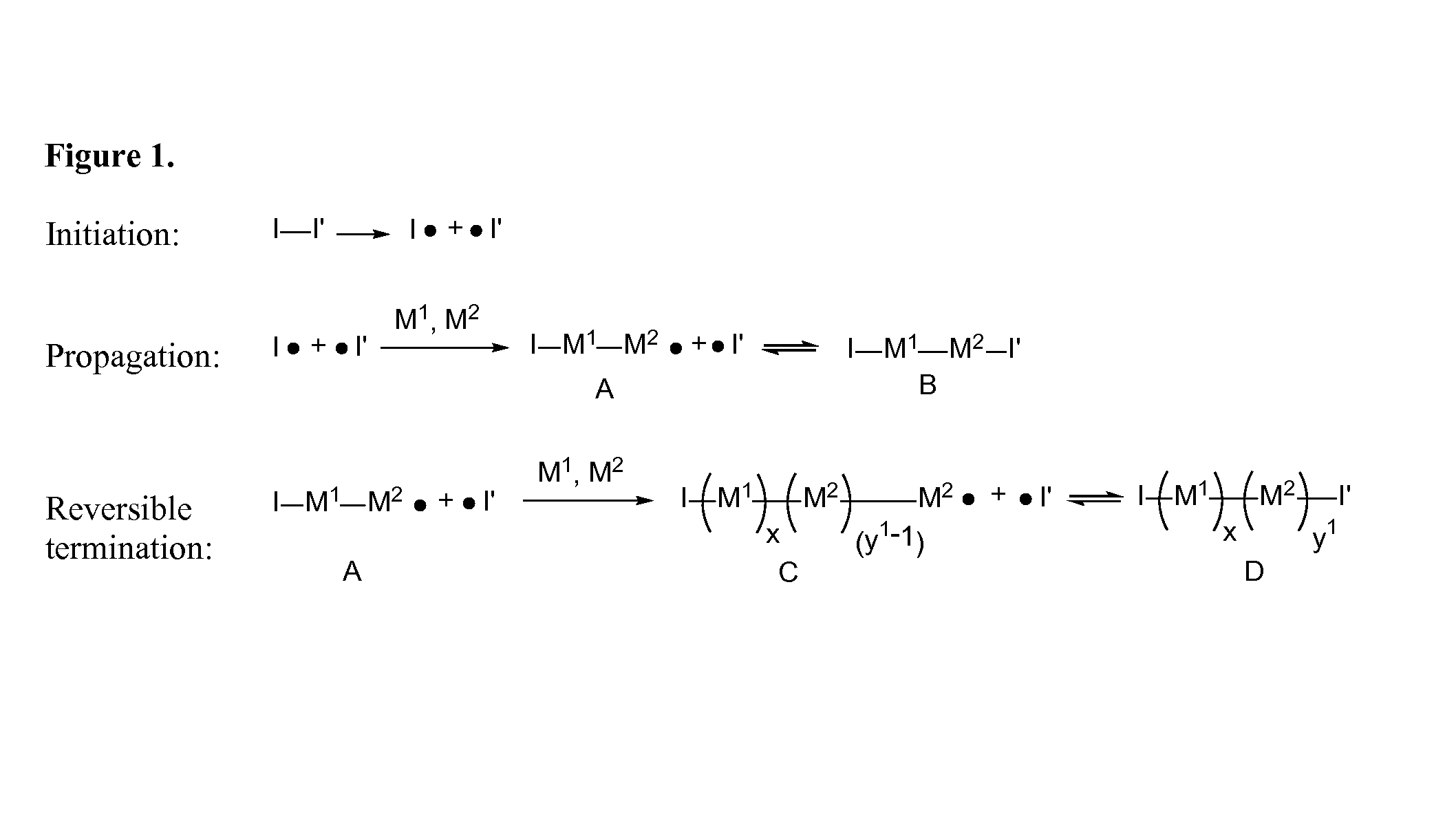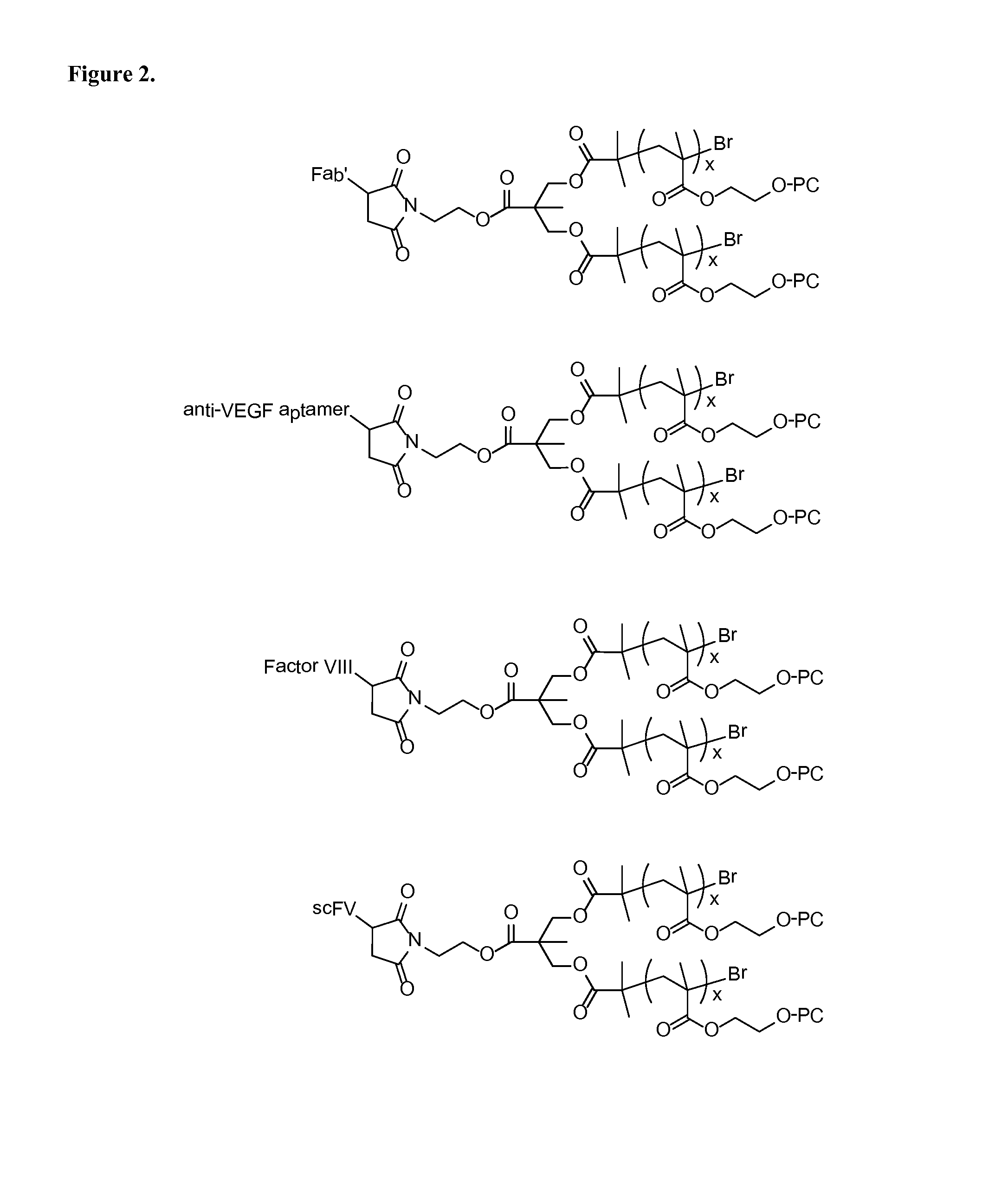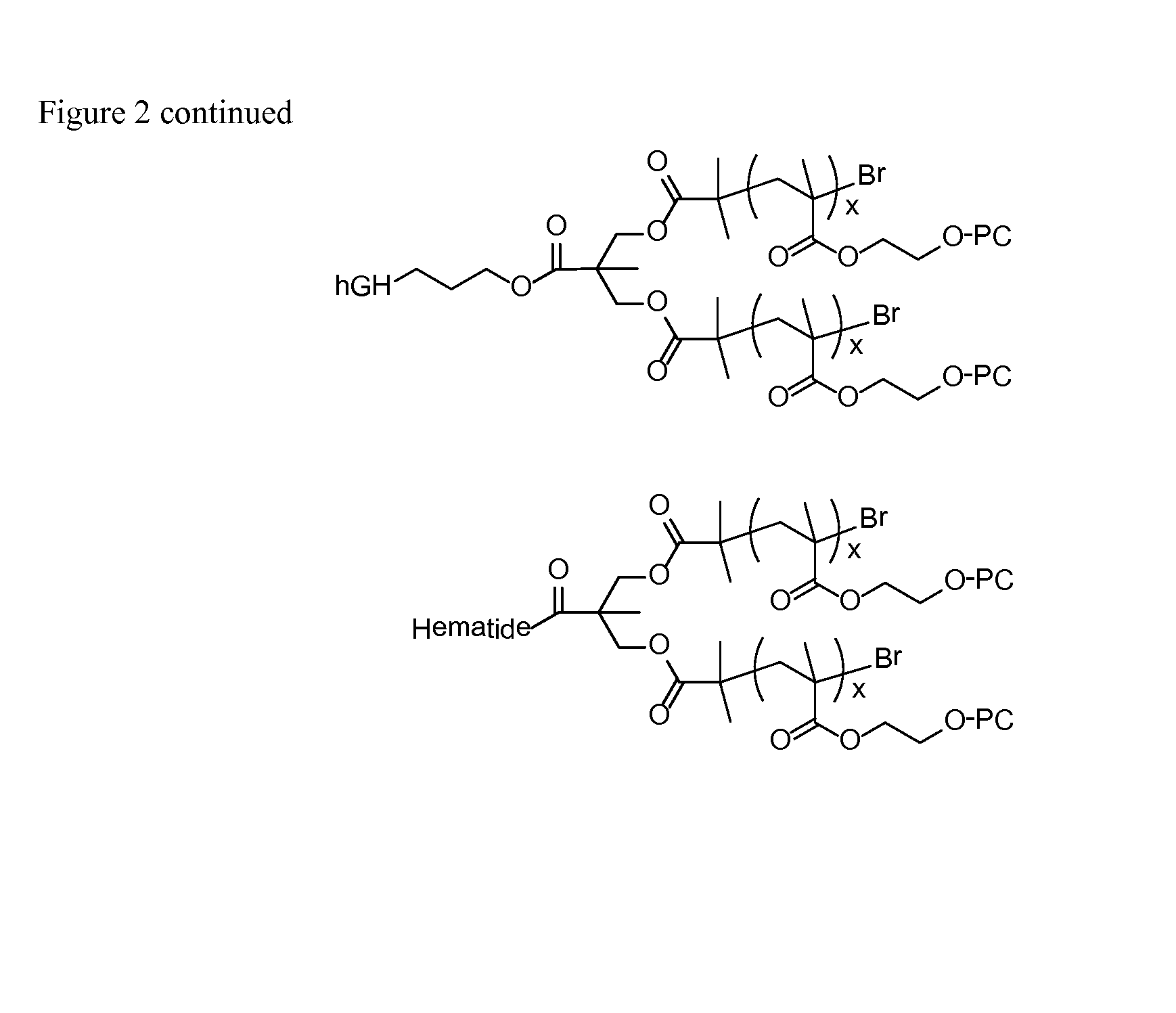High molecular weight zwitterion-containing polymers
a technology of zwitterion and polymer, which is applied in the field of high molecular weight zwitterion-containing polymers, can solve the problems of slow materialization of the conversion of these platform technologies into multiple products in the pharma pipeline, poor stability, and low manufacturing yield, and achieves high efficiency, high molecular weight, and high molecular weight. , the effect of high molecular weigh
- Summary
- Abstract
- Description
- Claims
- Application Information
AI Technical Summary
Benefits of technology
Problems solved by technology
Method used
Image
Examples
example 1
Preparation of N-(2-hydroxyethyl)-exo-3,6-epoxy-1,2,3,6-tetrahydrophthalimide
[0295]
[0296]A 100-ml round-bottom flask equipped with a stir bar was charged with 50 ml ethanol and 2.0 grams of exo-3,6-epoxy-1,2,3,6-tetrahydrophthalic anhydride. The stirring mixture was cooled with an ice water bath, and a solution of 0.73 grams of ethanolamine in 20 ml of ethanol was added drop wise over 10 minutes. The reaction was heated at reflux for 4 hours, then refrigerated overnight. Filtration and rinsing with ethanol yielded 0.73 grams of the desired product as a white crystalline solid. The filtrate was concentrated and chilled again to obtain a second crystal crop. 1H NMR (400 MHz, CDCl3): δ=2.90 (s, 2H, CH), 3.71 (m, 2H, OCH2), 3.77 (t, J=5.0 Hz, NCH2), 5.29 (t, J=1.0 Hz, 2H, OCH), 6.53 (t, J=1.0 Hz, 2H, CH═CH).
example 2
Preparation of isopropylidene-2,2-bis(hydroxymethyl)propionic acid
[0297]
[0298]A 100 ml round-bottom flask equipped with a stir bar was charged with 50 ml of acetone, 13.8 ml of 2,2-dimethoxypropane, 10 grams of 2,2-bis(hydroxymethyl)propionic acid, and 0.71 grams p-toluenesulfonic acid monohydrate. The mixture was stirred for two hours at ambient temperature, then neutralized with 1 ml of 2M ammonia in methanol. The solvent was evaporated and the mixture dissolved in dichloromethane, then extracted twice with 20 ml of water. The organic phase was dried over magnesium sulfate and evaporated to give 10.8 grams of the product as a white crystalline solid. 1H NMR (400 MHz, CDCl3): δ=1.20 (s, 3H, CH3CC═O), 1.43 (s, 3H, CH3), 1.46 (s, 3H, CH3), 3.70 (d, J=12.4 Hz, 2H, OCH2), 4.17 (d, J=12.4 Hz, 2H, OCH2).
example 3
Preparation of N,N-dimethylpyridinium p-toluenesulfonate (DPTS)
[0299]
[0300]A solution of 1.9 grams of p-toluenesulfonic acid monohydrate in 10 ml benzene was dried by azeotropic distillation using a Dean-Stark trap, then 3.42 grams of 4-dimethylaminopyridine were added. Much solid formed, and an additional 25 ml of benzene were required to mobilize the reaction, which stirred slowly as it cooled to room temperature. The resulting solid was isolated by filtration, washed with 10 ml of benzene, and dried to yield 7.88 grams of the product as a white solid.
PUM
| Property | Measurement | Unit |
|---|---|---|
| elimination half life | aaaaa | aaaaa |
| elimination half life | aaaaa | aaaaa |
| concentrations | aaaaa | aaaaa |
Abstract
Description
Claims
Application Information
 Login to View More
Login to View More - R&D
- Intellectual Property
- Life Sciences
- Materials
- Tech Scout
- Unparalleled Data Quality
- Higher Quality Content
- 60% Fewer Hallucinations
Browse by: Latest US Patents, China's latest patents, Technical Efficacy Thesaurus, Application Domain, Technology Topic, Popular Technical Reports.
© 2025 PatSnap. All rights reserved.Legal|Privacy policy|Modern Slavery Act Transparency Statement|Sitemap|About US| Contact US: help@patsnap.com



